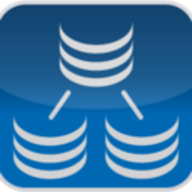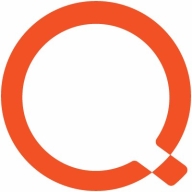

JumpMind SymmetricDS and Quest QoreStor compete in data management and optimization. Quest QoreStor tends to have the upper hand due to its advanced features, despite SymmetricDS's cost-efficiency advantages.
Features: JumpMind SymmetricDS offers cross-platform database synchronization, real-time data transfer, and supports diverse systems. Quest QoreStor is recognized for its deduplication technologies, seamless cloud integration, and data efficiency scalability.
Ease of Deployment and Customer Service: JumpMind SymmetricDS is straightforward to deploy with comprehensive documentation and reliable support, offering smooth implementation. Quest QoreStor requires a more complex deployment model but provides extensive customer service and technical support for intricate setups.
Pricing and ROI: JumpMind SymmetricDS has a lower setup cost with favorable long-term ROI, appealing for budget-conscious businesses. Quest QoreStor incurs higher initial costs but achieves substantial ROI via data optimization and storage savings.

JumpMind SymmetricDS is a powerful data replication software that provides synchronization software solutions for both databases and filesystems. This software is platform-independent and web-enabled as well as database agnostic. JumpMind SymmetricDS creates prompt bi-directional data replication while scaling to a large amount of nodes and working in close to real time across both WAN and LAN networks. This allows companies to integrate data using the feature for continuous change data capture.
This data replication software allows companies with limited network bandwidth or bad connectivity to benefit from excellent cloud conditions. The greatest benefit of JumpMind SymmetricDS is its vast integration across databases, streaming platforms, and data warehouses. Some of the relational databases where this data replication software can be used include Oracle, PostgreSQL, MySQL, Sybase, Informix, Ingres, Tiber, and VoltDB. NoSQL databases like MongoDB, Apache Cassandra, and Azure Cosmos are also compatible with the JumpMind SymmetricDS data replication software. The data warehouses that are compatible with this software include Teradata, SAP HANA, Azure-SQL server by Microsoft, BigQuery, Amazon Redshift, Pivotal Greenplum, and Snowflake data warehouse. Providing coverage of so many databases and warehouses allows broad outreach of the JumpMind SymmetricDS across many different companies and users.
JumpMind SymmetricDS offers many valuable features, including:
Other features include tools for conflict detection and resolution, embedding and extending, filtering, subsetting, and transforming.
The benefits of using JumpMind SymmetricDS include:
According to the CEO at a non-profit, JumpMind SymmetricsDS is fully featured and is also very easy to use and install. He finds it to be self-explanatory to use and says that their support is very good.
Quest QoreStor is commonly used for deduplication, compression, backup, and restore, integrated with NetVault for robust data redundancy and cloud storage replication.
Quest QoreStor optimizes data management with its sophisticated deduplication and compression capabilities, allowing companies to efficiently handle data redundancy. By integrating seamlessly with platforms like NetVault, Veeam, and resellers utilizing SPHiNX and BackBox, Quest QoreStor serves as both local and offsite repositories. This solution manages replication between production and corporate locations, strengthening recovery and improving backup operations. QoreStor's software-based nature ensures flexibility and easy integration, although improvements in replication and installation are sought by users.
What Are Key Features of Quest QoreStor?In sectors such as finance, healthcare, and technology, Quest QoreStor aids in maintaining vital data management with its robust features, enhancing data recovery strategies. Its use with secondary backup targets and replication capabilities supports a wide range of industry requirements. However, challenges such as initial setup complexity and system interface improvements are areas for growth, particularly in expanding capacities and addressing specific cybersecurity concerns like ransomware protection on Linux.
We monitor all Data Replication reviews to prevent fraudulent reviews and keep review quality high. We do not post reviews by company employees or direct competitors. We validate each review for authenticity via cross-reference with LinkedIn, and personal follow-up with the reviewer when necessary.